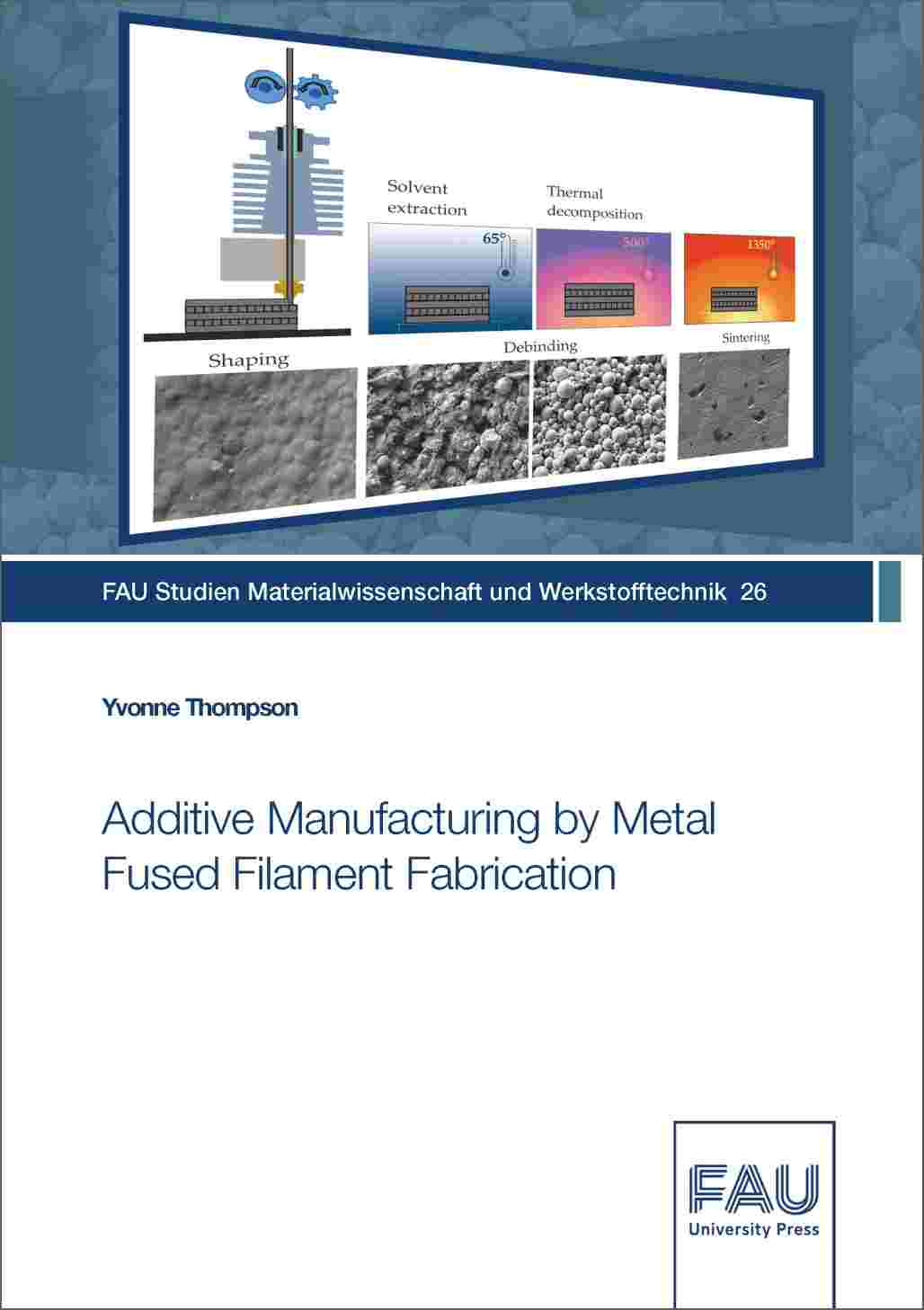Description
Metal fused filament fabrication (MF3) with metal-filled filaments is an indirect process that uses polymeric binders for additive shaping of green bodies. These are processed into solid metal parts after debinding and sintering. Due to the filament-based shaping, this process can be used for the additive manufacturing of all sinterable powder materials requiring low investment costs. The MF3 process could thus provide a cost-effective and material-flexible alternative to powder bed fusion (PBF) manufacturing of small metallic components with complex shapes. To enable a successful process application, parameter optimization as well as the selection of the furnace atmosphere for each individual process step is crucial to achieve a high final density. In this context, the applied parameters have a significant influence on the microstructure and the functional and mechanical properties of the manufactured components. It is the aim of this work to identify suitable parameter sets for the individual process steps and to evaluate the applicability of MF3 for AM of various high-value metal alloys. This includes a general parameter optimization for each step of the entire process chain of shaping, debinding and sintering, independently of the processed metal powder. Based on the general process implementation, systematic parameter studies were performed for 316L, Ampersint 1557.02, cp-Ti, IN 718, CoWAlloy3mod, and 99 % pure Cu to derive the best processing strategies for each of these metals.


Reviews
There are no reviews yet.